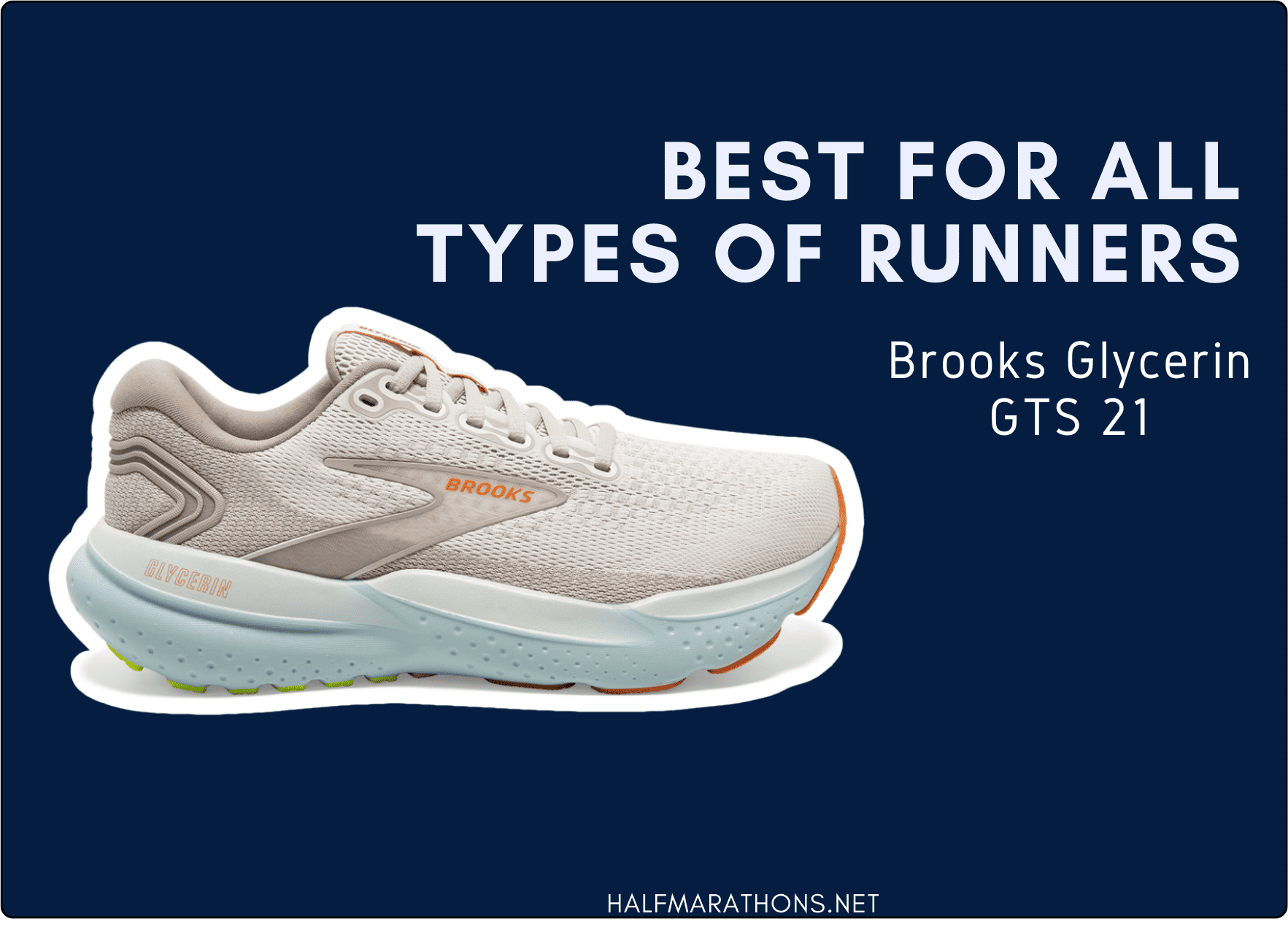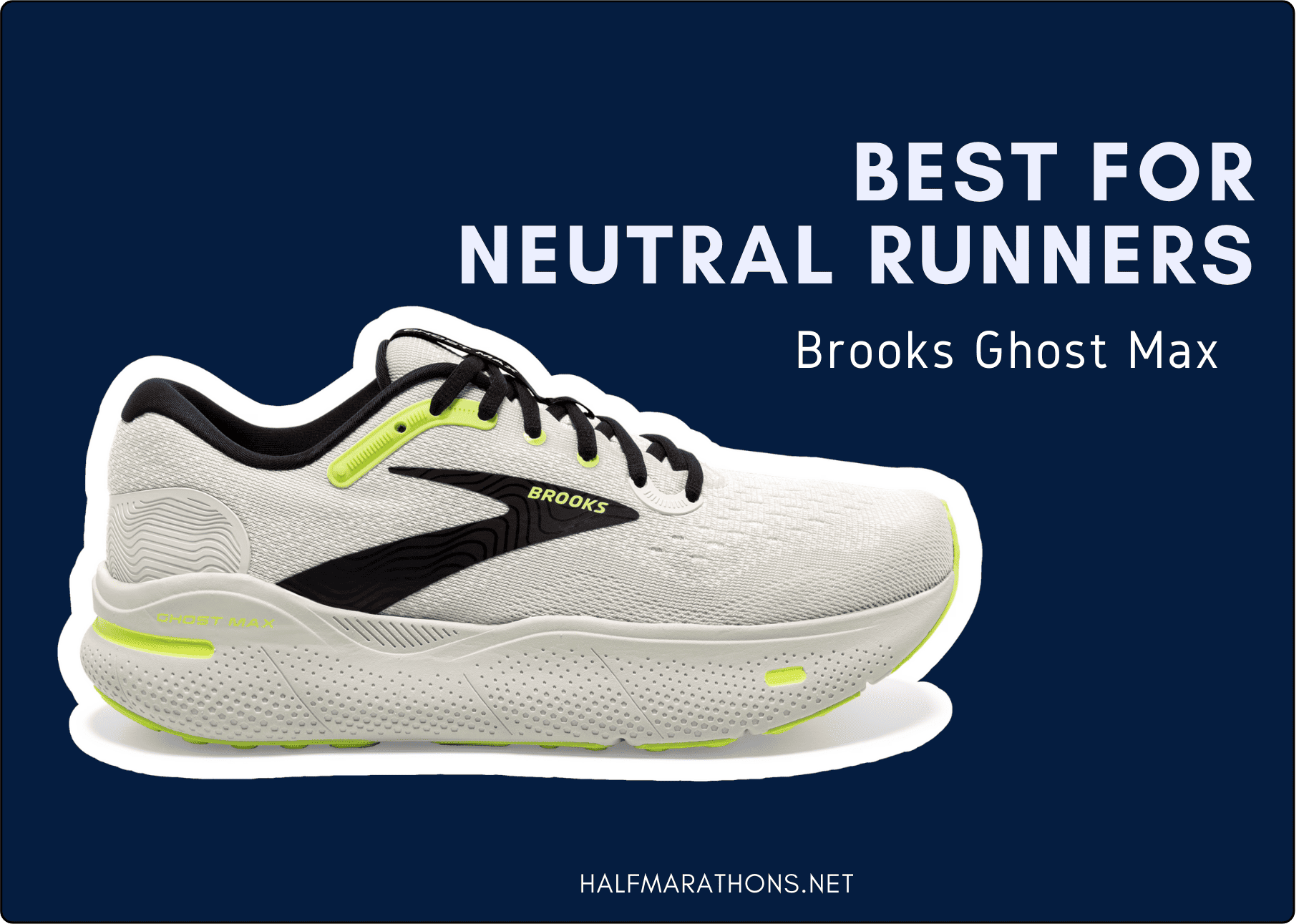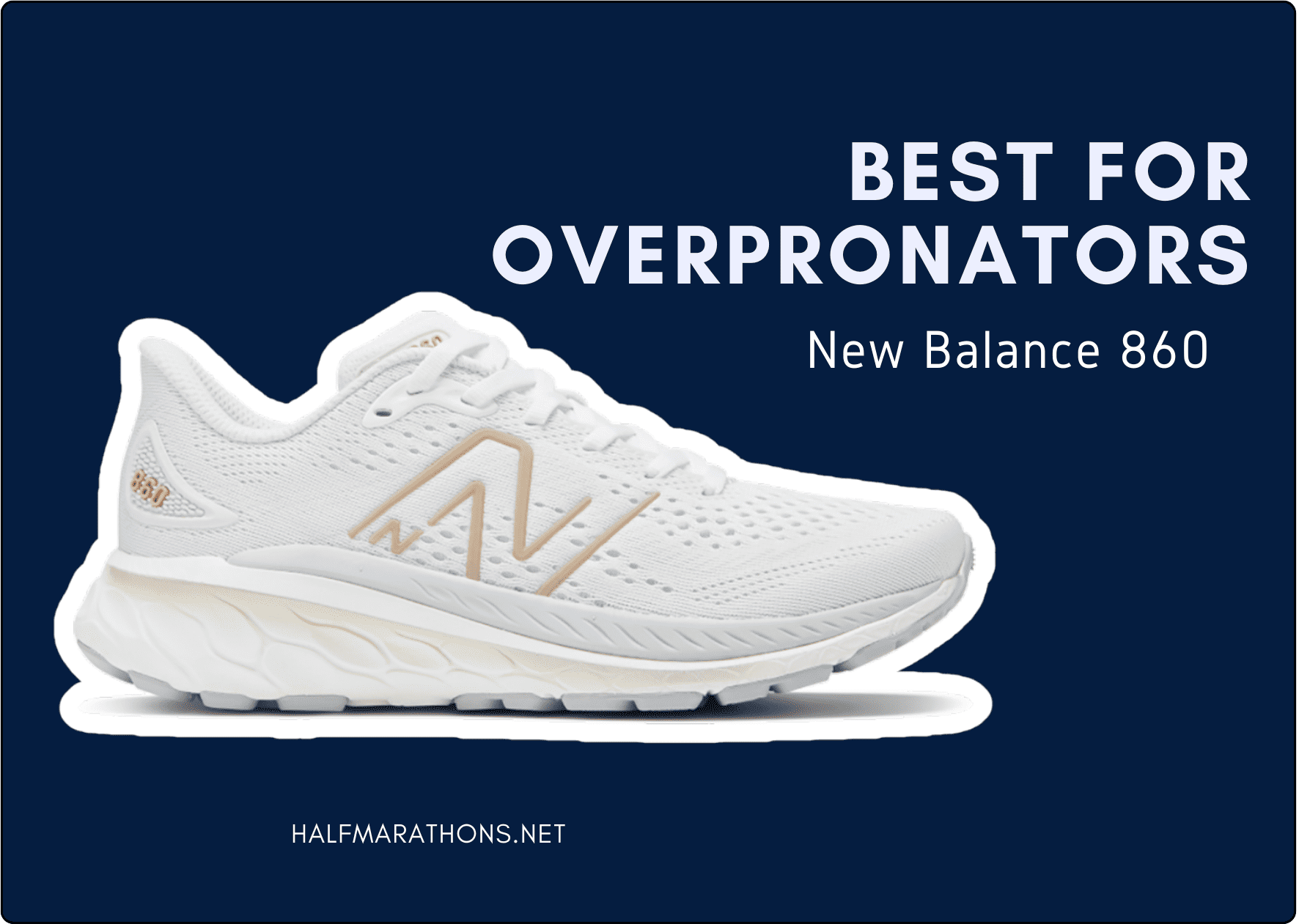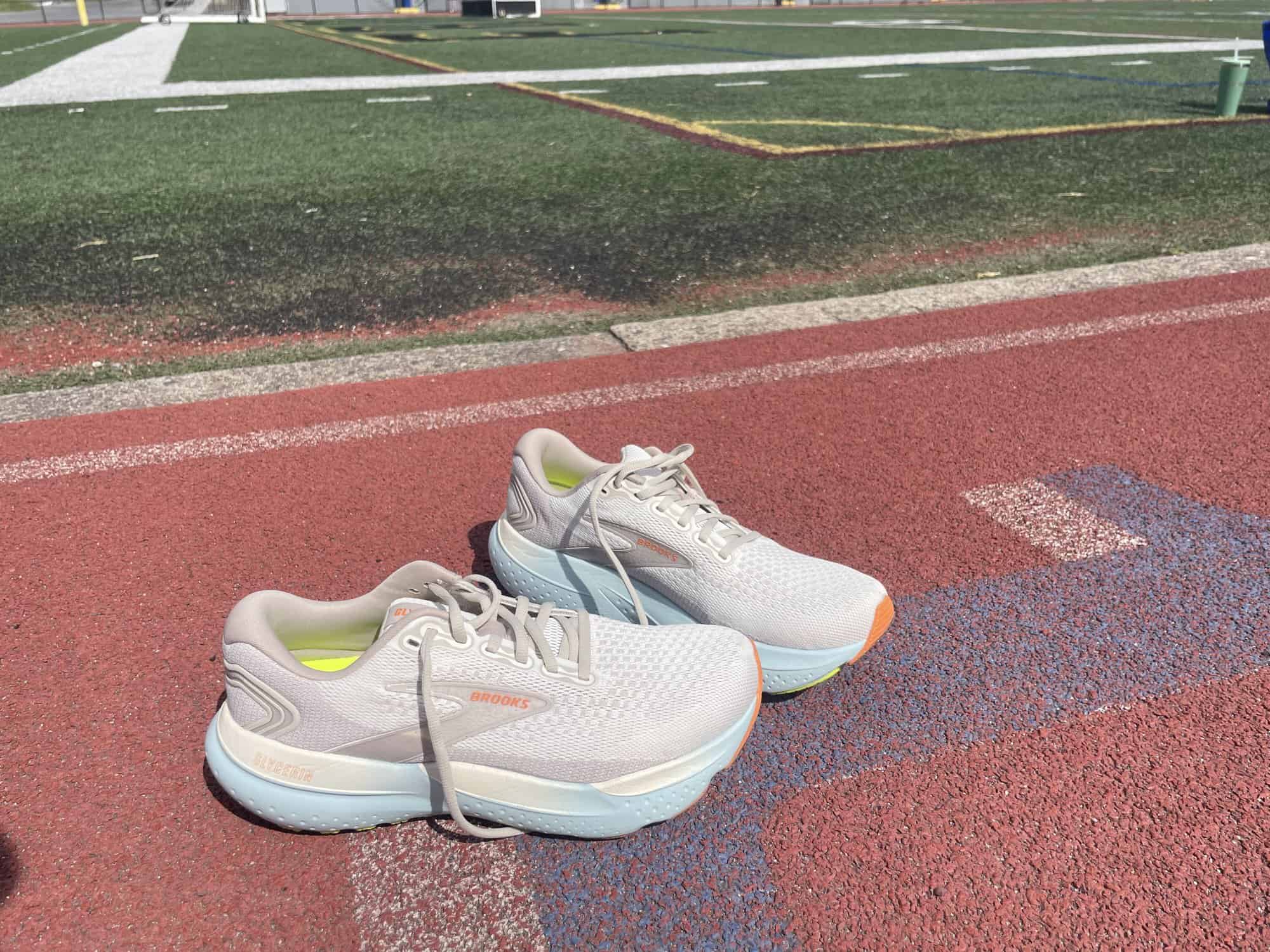If you are already suffering from a bad knee, you probably know that it is one of the most difficult injuries to get rid of once the nagging pain begins. Even though it can be tough to mitigate, it doesn’t mean your running career has to come to an end. Though, spending some time cross training as an injured runner in the pool or an Alter-G is never a bad idea. Another component to your speedy recovery? Getting the best running shoes for knee pain.
Overuse injuries are common enough. Especially with new runners or those piling on high mileage for their long distance runs, the issue for many athletes can come down to improper selection of shoes.
If your shoes are not conducive to your gait, do not fit properly, or don’t have enough cushioning to accommodate your mileage, changing to a shoe more suited to your needs can make a serious difference.
In a 2023 study, Israeli researchers found among people with chronic knee inflammation (knee osteoarthritis), wearing extra cushioning sport shoes reduced the amount of pain in their bad knee and helped it have more functionality.
Less pain, more mobility.
If you’ve been knee-pain free, it’s our recommendation to head to your local running store or speak to a health or running professional to determine whether your current shoes are a good fit for you.
They will also be able to assess your gait. And, make sure that you are protecting yourself from injury while working towards your running goals.
To help you out, we gathered up some of the best running shoes for knee pain available right now. Each pair of running shoes we selected varies in style, weight, support, drop, design, and cushioning.
Every knee is different. The right shoe to ease the pain you have will be different for every runner.
Keep reading to learn more about our picks. How we chose them. And, how to pick the best one for you.
How We Chose the Best Running Shoes for Knee Pain
To select the best running shoes for knee pain, I reached out to two physiology experts: sports coach Sean Klein, CPT, founder of the workout app Programme, and Samantha Smith, PT, DPT, a physical therapist who specializes in knee problems.
These experts shared insight on what features runners should look for in a shoe to help aid and prevent knee pain.
With that in mind, I considered the top models on the market that fit within these expert-set parameters. Based on reviews by experts, customers, and my own experience testing many of these running shoes as a runner and gear writer. I also incorporated each shoe’s overall value.
I was able to narrow it down to the nine best running shoes anyone should consider if they deal with knee pain.
What to Consider
Based on insight from our experts, Klein and Smith, these are the top factors to consider when shopping for a running shoe for knee pain:
Cushioning
This is arguably the most important feature to consider when looking for a running shoe to combat knee pain. Higher cushion models tend to work best for those with knee pain no matter the initial cause. They are able to absorb shock more efficiently and cushion the footfall.
Support
The concept of support has become a bit blurry in the past couple years.
While it used to mean a stiff medial post that would force the arch up and out. Many ‘stability’ shoes now opt for a more adaptive model like guide rails which hug the outer edge of the foot and provide adaptive arch support. That means it will only adjust your gait if and when you need it.
This is a great option for neutral runners that may experience overpronation only when fatigued. It’s also for those with high arches that need support, but not as much as a traditional stability shoe has to offer.
If overpronation is the cause of your knee pain, then you will definitely want to opt for a stability shoe. The type of stability matters less than just having it there.
Drop
How much the drop of a shoe truly matters is debatable, but some find that it makes a difference.
Some brands like Hoka opt for a lower drop at about 5mm. This tends to give a more natural running motion and can help improve gait—especially for heel strikers. This aids in reducing shock with increased fluidity.
Because it is reducing shock, having a lower drop can be good for those with knee pain. It can prevent the knee from absorbing too much stress as well as overextending.
Responsiveness
Opting for a bouncier, slightly-firmer foam can actually be helpful when running through knee pain. Though it may seem counterintuitive, this is because a more responsive shoe will help propel you forward which decreases shock, increases energy return, and ultimately helps you spend less time on the ground.
Also, since responsive shoes give less, they provide a more stable base to keep the foot stable on uneven surfaces.
Purpose
Like all running shoes, those best for knee pain are not all made the same. Some models are more suited for racing and speedwork, some for daily training, and some for those seemingly endless, slogging recovery runs.
When looking for a shoe, make sure that it will fit your needs. And, if you are unsure, opt for a do-it all model.
How to Choose the Right Shoe for You
When it comes to actually choosing your shoe, it’s unfortunately not as simple as just picking one out of the bunch. Like with all running shoes, it’s important to match your individual foot mechanics—an overly-excessive pronation, flat feet, or an excessive supination—with a shoe that will balance your natural roll.
Opting for the wrong shoe for your running style can cause more knee pain as it either pushes you out of alignment. Or, doesn’t provide enough support.
The good news: Because a properly-fitted running shoe adjusts your foot mechanics, it can often make a huge difference in minimizing or eliminating knee pain.
“[This] can help with the mechanics of the knee joint since, typically, knee pain comes from a weak foot, weak hips, or running form,” Smith explains.
So can all knee pain be fixed with a new pair of shoes?
Unfortunately the answer is not so simple. “Some common knee injuries include patellar tendinitis (runner’s knee), iliotibial band syndrome (ITBS), and patellofemoral pain syndrome,” says Klein. “These conditions can often be helped by wearing the appropriate running shoes with features such as arch support, shock absorption, and stability.”
When it comes to recovering from an injury though—particularly one caused by overuse, Dr. Smith stresses that rest and low impact activities are most important. “
Continuing to run with an overuse injury will cause a cascade of events. It is hard to recover from an overuse injury if you constantly re-irritate the injury continuing to run.”
Both Smith and Klein noted however that investing in a proper shoe can help you recover and return to running quicker and safer. “Purchasing the right pair of running shoes may not completely solve an overuse injury. It can certainly help in the recovery process,” says Klein.
“New shoes with proper support and cushioning can alleviate stress on your knees and prevent further aggravation of the injury.”

While we don’t like the term “bad knees.” It assumes that your knee is in a chronic state of being “bad.” We understand that people use that term looking for shoes to support their knee pain. Here’s our top picks for the best running shoes for knee pain.
Best Max Cushion Running Shoes for Bad Knees Overall
Hoka Bondi 8

Key Specs:
- Weight: 10.8 oz
- Drop: 4mm
- Cushioning Level: Max-Cushion
- Type: Neutral
The Hoka Bondi 8 is the go-to shoe for people looking for maximum cushion, comfort, and shock absorption. It’s not only the thick EVA midsole that makes this boat-of-a-shoe a great option for those suffering from knee pain.
It also has a 4mm drop which forces you into a mid-foot strike, and helps you to roll through the foot in a more natural way.
The Bondi’s midsole also has a flared base at both the toe box and heel, and is designed so your foot sits down in the foam a bit.
Together, these features give the shoe a decent amount of stability regardless of being a neutral shoe. If you have high arches and need more arch support, you can also always add an insole.
It is important to note that this shoe is quite bulky. If you tend to scuff your feet while you run, or want something for speedwork, this shoe will probably feel a bit excessive. If you still want a Hoka, try the Clifton for a lighter weight option.
Best Max Cushion Stability Shoes
Asics Gel Kayano 30

Key Specs:
- Weight: 9.3 oz
- Drop: 10mm
- Cushioning Level: High
- Type: Stability
The Gel Kayano is one of the most popular high-cushion, high-stability shoes on the market.
It’s a great option for runners with knee pain who are looking for both a super plush and incredibly stable ride.
The most recent release of the Gel Kayano 30 has traded in its medial post for a more gentle—but equally effective—guide rail system. It uses adaptive support to cradle the foot and guide it into a neutral position.
Keeping yourself in a neutral position while running will ensure that your knees are also in alignment. This can help prevent further injury or discomfort.
It also uses a very soft but lightweight foam for the majority of the midsole. So, it has a squishy but responsive feel.
And for heel strikers that love the signature gel pad. Don’t worry, it’s still sandwiched in between the foam for extra comfort and shock absorption.
Since this shoe is so incredibly cushiony however, it also comes with some bulk. So, if you prefer a bit of ground feel while you run, you probably won’t love this model.
We ranked this shoe one of our favorite max-cushioned daily trainers.
Best for All Types of Runners
Brooks Glycerin GTS 21

Key Specs:
- Weight: 9.2 oz
- Drop: 10mm
- Cushioning Level: High
- Type: Stability
The Brooke Glycerin GTS has long-been a favorite shoe among the running community.
The newly-released Glycerin GTS 21 features upgrades that make the classic design even better. This model added an additional 2 mm of DNA Loft foam for an extra plush feel. And, it has a super breathable mesh upper that keeps the feet dry and cool.
While it is crucial to select a running shoe that is made for your specific foot pronation or supination, the Glycerin GTS is uniquely designed with an adaptive guiderail support system that works for everyone from overpronators to neutral runners to supinators.
It is a bit further off the ground than its predecessor. But, the support system helps to keep you from slipping off the side of the shoe or torquing on turns.
The combination of the cushioning along with the support system helps to decrease shock and keep the foot and ankle in proper alignment. This will help reduce and prevent knee pain.
Most Responsive Trainer
Saucony Triumph 21

Key Specs:
- Weight: 8.8 oz
- Drop: 10mm
- Cushioning Level: High
- Type: Neutral
If you want a shoe that can handle everything from long runs to speed work to everyday recovery jogs, all while supporting a sometimes-achy knee, the Saucony Triumph is a fantastic option.
This shoe uses a TPU bead midsole which is incredibly durable and responsive. It has excellent energy return to help propel you forward with every step and reduce shock absorption in the process. It also has a pretty drastic upturn in the toe box. This helps to roll the foot through to the next step.
This is a true neutral shoe, and very much a design that has you sitting on top of the foam. So, it is best for neutral runners that need cushioning.
However, without much arch support, it’s not ideal for runners with high arches.
Best Lightweight Cushion
On Cloudmonster

Key Specs:
- Weight: 8.1 oz
- Drop: 6mm
- Cushioning Level: High
- Type: Neutral
The On Cloudmonster is a unique combination of plush softness and a firm underlayer that gives it an incredibly cushioned feel while still remaining supportive.
This shoe is backed by interesting technology. The midsole is comprised of Helion superfoam, formatted in a pod-like shape which contract and expand with every step. This gives the shoe a more flexible feel than many high cushion running shoes. While also helping it to be a bit more responsive.
If you do happen to run on particularly rocky or gravelly areas however, this may not be the option for you. As rocks have a tendency to get stuck between the pods.
The Cloudmonster is crafted with a rocker shape to propel you forward and forces you to roll through the foot. Whether you’re a heel strike-runner or a forefoot runner.
This in turn decreasing shock and encouraging a midfoot strike, preventing over extension of (and pain in) the knees.
Despite being a true high-cushion shoe, the On Cloudmonster is on the lighter side, and has a speedboard to give it a faster, snappier feel than most competitors.
Best for Speed
Asics MagicSpeed 3

Key Specs:
- Weight: 7.8 oz
- Drop: 5mm
- Cushioning Level: medium
- Type: neutral
If you have runner’s knee pain, it is best to stay away from super aggressive racing shoes. But just because you are choosing to forgo something that looks more like a moon boot than a racing flat doesn’t mean you can’t have a fast shoe.
The Asics MagicSpeed 3 works great as both a speed training and racing shoe. It does have a full length carbon plate which makes it propulsive, but combined with the soft feel of FF Blast + foam (this foam is lighter and more responsive than the refular FF Blast which is used in the Nimbus and Kayano) and a low stack height, it won’t feel like a huge jump from your everyday running shoes. Because of the cushiony feel and responsiveness, it can help increase your cadence which effectively reduces shock that can radiate up to the knees causing pain and discomfort.
While carbon plates can increase cadence and help you run more efficiently, they can also be hard on the legs, so if you are dealing with a stress or overuse injury you may want to opt for something carbonless for the time being.
Best for Neutral Runners
Brooks Ghost Max

Key Specs:
- Weight: 10 oz
- Drop: 6mm
- Cushioning Level: High
- Type: Neutral
It’s pretty safe to say that almost any runner you know has trained in the Brooks Ghost at least once—and chances are that initial run had them joining the club of Ghost fanatics. If that’s you, but you now feel you want some more cushioning for your knee pain, the Ghost Max is a great option for you.
This shoe is basically a pumped up version of the Ghost—it has a very similar fit to the mesh upper, but is stacked up with an additional 4mm of the super soft DNA Loftv2 foam. This shoe also has a glide roller which helps you to roll through the foot for a seamless heel-to-toe transition.
The roller along with an extra wide base makes this an exceptionally stable shoe despite technically being a neutral model or, just great for runners with wide feet or the prevention of blisters.
The biggest complaint about this shoe is that it’s not particularly attractive, but trust me, the comfort level far outshines the boat-like silhouette.
Like this recommendation? You might also like the Nike Pegasus 40.
Related: 100,000 shoe fanatics recommended their favorite running shoes of all time
Best for Trail Running
Hoka Speedgoat

Key Specs:
- Weight: 10.3 oz
- Drop: 4mm
- Cushioning Level: High
- Type: Neutral
While some trail running can be easier on the joints thanks to a softer surface, it can’t hurt to opt for a higher cushion model for double relief.
The trail running shoes we like the most are the Hoka Speedgoat has a bouncy-but-cushiony feel underfoot that provides excellent shock absorption for knee protection as well as protection against uneven surfaces and sharp objects.
Since this foam is so soft though, some do find it to be a bit too squishy on super technical trails, and prefer something firmer for more stability.
Despite a decently-high stack height, the structured upper helps your foot feel secure in the shoe and is designed to prevent any fear of rolling your ankle over the edge. This is a neutral model but it does tend to work well with most insoles thanks to the high heel cup.
Like the Bondi, the Speedgoat also has a 4mm toe drop which helps you roll through your foot with each step, reducing stress and encouraging a mid-foot strike.
Best for Severe Overpronators
New Balance 860

Key Specs:
- Weight: 8.6 oz
- Drop: 10mm
- Cushioning Level: medium
- Type: Stability
If you are a severe overpronator—that is, your foot rolls to the outside edge as you run—a traditional stability shoe like the New Balance 860 is a great option. This shoe uses a medial post for ultra-high support, and has inflexible arch support which is great for those that may also suffer from issues like Plantar Fasciitis. If you are suffering from knee pain and have been running in a neutral shoe, there’s a good chance that your discomfort could be coming from misalignment due to overpronation, so a highly supportive shoe like this one could be the answer for you. If you aren’t a heavy overpronator though, this shoe could end up over correcting your gait and cause more issues—if you aren’t sure how much you overpronate, a more adaptive model may be better for you.
Despite its high support, this shoe is still quite comfortable. It uses New Balance’s signature Fresh Foam X for the majority of the midsole which is soft, light, and responsive. All together, these features make a great daily trainer for most runners who overpronate to carry you through everything from long run to track workout.
FAQs
Which Hoka Running Shoe is Best for Knee Pain?
According to our run testers and feedback from physiology experts, we recommend the Hoka Bondi 8 and the Hoka Speedgoat for running with knee pain.
Why Trust Us
Gabrielle began her writing career in 2019 with a fellowship for Runner’s World Magazine and was Commerce Editor for the publication until 2023. She is now freelancing full time and specializes in everything health, wellness and fitness. She also ran track and cross country at Muhlenberg College. Having worked in running retail since 2017, she is also experienced in fitting and recommending shoes and gear in person.
–
Everything featured on Half Marathon Guide is independently selected and curated. We may receive a small commission on purchases made from some of our links.





